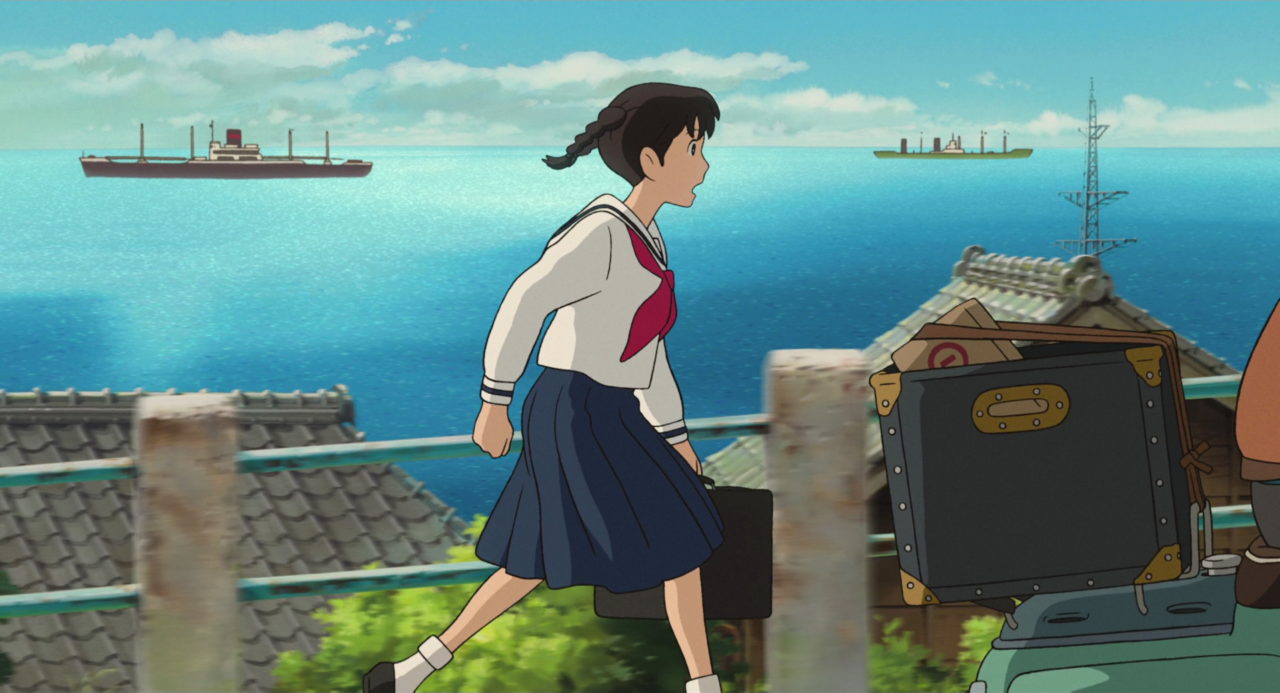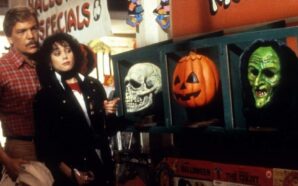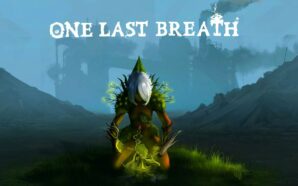Tales From Earthsea & From Up On Poppy Hill
This is part 6 of a series of reviews, looking at Studio Ghibli’s films, you can find Parts 1, 2, 3, 4 & 5 which look at Hayao Miyazaki’s and Yoshifumi Kondō’s directed films, by clicking on the hyperlinks.
Gorō Miyazaki, son of Hayao Miyazaki, is described as “reluctant” to follow in his father’s footsteps and enter the world of film-making. It’s entirely understandable, even before I started watching, and subsequently reviewing the films for this series, I knew who Hayao Miyazaki was. His reputation as a legendary figure is widely known and culturally cemented. Such towering figures cast long shadows. It’s incredibly difficult for those who follow to step out from them; that is perhaps especially so for the children of such figures.
The two Studio Ghibli films directed by Gorō Miyazaki, Tales of Earthsea (2006) & From Up On Poppy Hill (2011), sit at opposite ends of the spectrum for me. One is an excellent film, engaged me and had me invested emotionally into the characters and the drama unfolding around them. The other just doesn’t come together. Unexplored plot points, poorly fleshed out motivations and uninteresting characters left me feeling cold on the whole thing. So, which is which? A quick look at the Rotten Tomatoes review percentages will tell you that much. For context the lowest rated Hayao Miyazaki film clocks in at 87%, two of them do in fact, the rest are higher with all but one of those clocking in above 90%. Tales From Earthsea has a score of 41%, the worst score by far with the next lowest (My Neighbors The Yamadas) scoring 75%.
Now, review scores aren’t all that meaningful, neither are aggregate percentages of multiple reviews, they are indicative of critical opinion and nothing more. My favourite Studio Ghibli film so far, Nausicaä of the Valley of The Wind, is one of those 87% films. The one I liked least til now, Ponyo, has a score of 92%. Even among Isao Takahata’s films, which I’m yet to review, only one drops below 80%. With the bar set so high it is hardly surprising to me that Gorō Miyazaki’s directorial debut isn’t at that level. But to score only 41% was surprisingly low. I suspect if you took the expectation of the Studio Ghibli label away it would be viewed with a bit more forgiveness and score a bit higher.
Tales from Earthsea is an adaptation, I’m not familiar with the book series by Ursula K. Le Guin, so I don’t know how faithful the film is to that material. However, based on the film as presented, I can say with near certainty that the decision to use plot and characters from the first 4 books in the series rather than just 1 was a mistake. I suspect this is the source of the problems I have with the film. I’ve read that Le Guin, while praising the aesthetic of the film for looking beautiful, was disappointed with the story that was presented. When asked by Gorō Miyazaki if she liked the film after a private screening Le Guin responded “It is not my book. It is your movie. It is a good movie”.
You can find a full statement from the author about her thoughts on the film here. My thoughts echo many raised. Key elements of plot and character motivation just aren’t explored. The main character kills his father. The guilt he feels and consequences of exiling himself are explored to some degree; the consequences for the kingdom whose king was murdered by his now self-exiled son is not. Nor is the question of why he committed such an act ever raised or explored. Considering that it is this act that sets in motion the events of the entire film it doesn’t sit right with me that it goes unexplored. The film ends with Prince Arren resolving to return home and answer for his actions, the motivation remaining a mystery.

From Up On Poppy Hill
From Up On Poppy Hill is a much improved offering from Gorō Miyazaki. Capturing brilliantly the multi-faceted layers of the characters and setting. While the writing and direction are very safe, taking few risks if any, the beautiful animation and excellent characterisation really enlivens the production. The familiar tale of teenagers falling in love while some school based drama unfolds around them is a tried and true staple of Studio Ghibli’s work. What is interesting is the detail. They do great work harmonising the characters emotional tale, the heartbreaking tragedies that bind the families of the two love interests and the wider world in which they are set.
In 1963, Tokyo was preparing to host the Summer Olympics in the following year. This is seen as Japan’s chance to show the world the work they’ve done to change and better themselves following the events of World War 2. Growing up in a time of change like that shapes the world view of Umi Matsuzaki and her fellow students at high school. With newfound belief in challenging that which they view as wrong, they go against their school and seek ways to stop the demolition of the old building that houses the many after school clubs.
The Latin Quarter, as the building is called, is a character in itself. The art design behind it being detailed and complex in the right ways. When first shown it is dilapidated, dirty and packed with clutter. A place well used but badly in need of rejuvenation. It’s easy to see why it’s been earmarked as a building to be demolished to make room for redevelopment. Aethstetics are only surface level though and it’s important to look beyond the dust, clutter and broken pieces at what takes place inside there. The students of the various clubs are passionate, inquisitive and determined. By working together and garnering wider support from other students the Latin Quarter is transformed. Showing that combining good content with good presentation can lead to success. Having only one, or the other is often not enough.
For the main character, Umi and the boy she falls in love with, Shun Kazama, they discover that life is not as clean cut as a fairy tale. Their feelings for one another are tempered by revelations that their families are linked by tragedies of the recent past. The history that links them, that shapes and defines a lot about their families and who they are as people, is as heart-rending as it is complex. War’s leave lasting impacts on the people and families who make it through them. Mourning those who didn’t, picking up the pieces in their wake, trying to forge on to do the best they can for themselves and their families. It’s a touching story very of its place and time yet easily of any time or place recovering from tragedies; natural or man-made.








